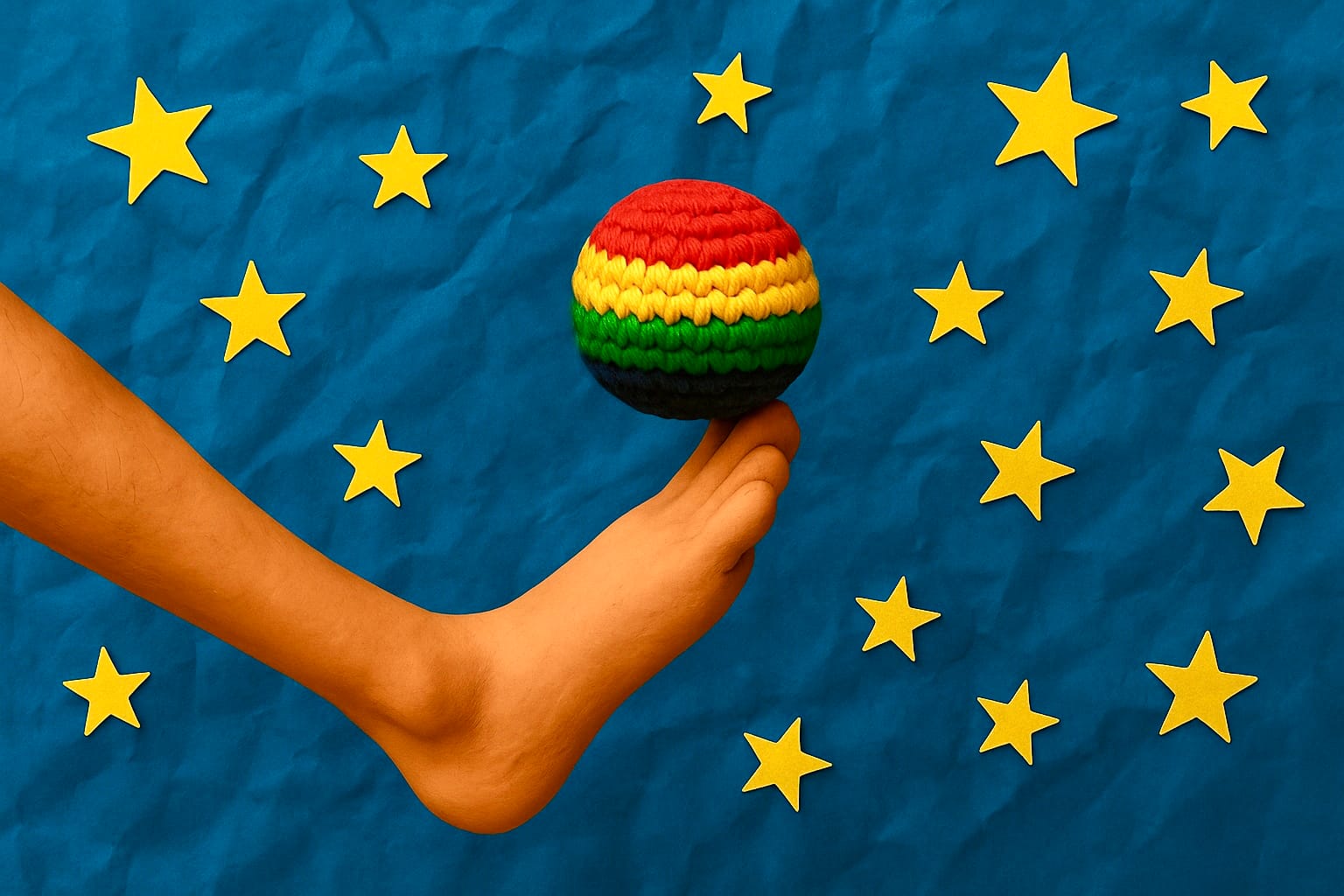Foot bag and the stories we tell ourselves about our body


At first, it’s awkward. The sack hits your foot, flops sideways, drops to the ground. You bend to pick it up — again. Your coordination feels off. Your timing is weird. Your body doesn’t do what you thought it could. And that’s exactly where the magic begins.
Learning to play footbag isn’t just about keeping a little sack in the air. It’s about watching, in real time, as your body unlearns one story and begins to write another. The old story might say: I’m clumsy. I’m not athletic. I’m too old. Too stiff. Too slow. But the sack doesn’t care about those stories. It just falls. And it invites you — again and again — to try. To adjust. To find rhythm where there once was hesitation.
What seems like a casual game becomes a mirror. Every kick, every misstep, every breakthrough — it all becomes a conversation between you and your body. A chance to listen, to learn, to laugh. To stop punishing yourself for not being perfect, and start celebrating the absurd, wobbly, beautiful process of becoming coordinated on your own terms.
And then one day, without realizing it, you pop the sack up three times in a row. Then five. Then ten. Something clicks. Not just in your foot, but in your sense of self. You’re not failing anymore — you’re flowing. And the story you tell about your body begins to shift: I’m learning. I’m adapting. I’m actually kind of good at this.
Footbag is play, but it’s also healing. It’s physical meditation. It’s a way back into your body — not as a problem to fix, but as a partner in motion. It teaches patience, presence, and a kind of humble pride. Not because you mastered a trick, but because you kept showing up long enough to let your body surprise you.
And that, really, is the trick worth learning.
